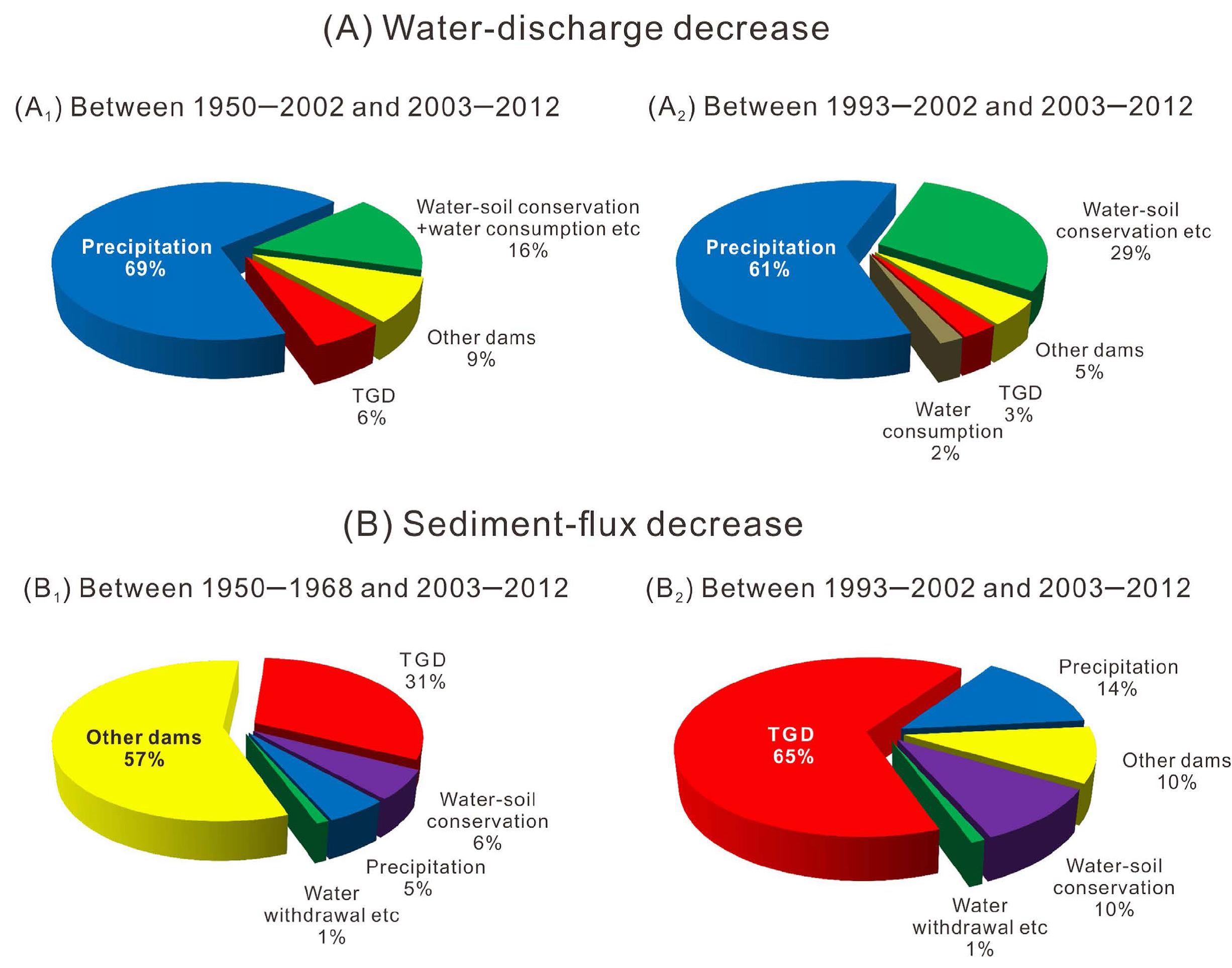Decline of Yangtze River water and sediment discharge: Impact from natural and anthropogenic changes
The increasing impact of both climatic change and human activities on global river systems necessitates an increasing need to identify and quantify the various drivers and their impacts on fluvial water and sediment discharge. Here we show that mean Yangtze River water discharge of the first decade after the closing of the Three Gorges Dam (TGD) (2003–2012) was 67 km3/yr (7%) lower than that of the previous 50 years (1950–2002), and 126 km3/yr less compared to the relatively wet period of pre-TGD decade (1993–2002). Most (60–70%) of the decline can be attributed to decreased precipitation, the remainder resulting from construction of reservoirs, improved watersoil conservation and increased water consumption. Mean sediment flux decreased by 71% between 1950–1968 and the post-TGD decade, about half of which occurred prior to the pre-TGD decade. Approximately 30% of the total decline and 65% of the decline since 2003 can be attributed to the TGD, 5% and 14% of these declines to precipitation change, and the remaining to other dams and soil conservation within the drainage basin. These findings highlight the degree to which changes in riverine water and sediment discharge can be related with multiple environmental and anthropogenic factors.
Relative impacts of various factors on (A) decreased water discharge, and (B) decreased sediment
flux at Datong over the post-TGD decade relative to pre-TGD periods.
flux at Datong over the post-TGD decade relative to pre-TGD periods.
List of relate results:
-
Decline of Yangtze River water and sediment discharge: Impact from natural and anthropogenic changesScientific Reports , 2015 , 5: 12581: doi:10.1038/srep12581

